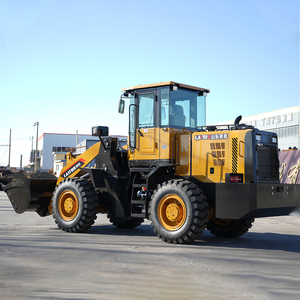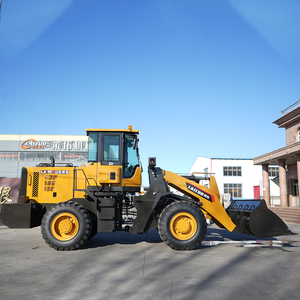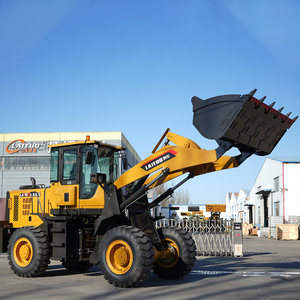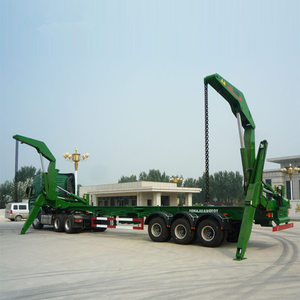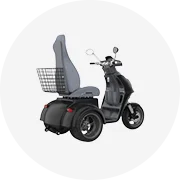Types of Container Loaders
A container loader is specialized equipment used for loading and unloading containers onto trucks, trains, and ships for efficient and safe handling. These versatile machines are essential for modern logistics operations, ensuring smooth cargo movement across global supply chains.
| Loader Type | Primary Use | Mobility | Typical Capacity |
|---|---|---|---|
| Ship-to-Shore Cranes | Maritime port operations | Fixed/Rail-mounted | 30-65 tons |
| Rail Mounted Container Cranes | Container terminals | Rail-mounted | 40-50 tons |
| Rubber Tyred Gantry Cranes | Container terminals | Moderate | 40-50 tons |
| Straddle Carriers | Port container handling | High | 30-60 tons |
| Top Lift Trucks | Container logistics | High | 8-45 tons |
| Forklift Trucks | Warehouse operations | Very High | 1-25 tons |
Ship-to-Shore Cranes
Ship-to-shore cranes are specialized container loaders used exclusively at ports for maritime operations. These massive structures feature enormous vertical masts that can reach deep into large container vessels, often extending over 150 feet high.
These cranes operate on rails along the quayside, allowing precise positioning alongside vessels. They employ sophisticated spreader systems that can handle multiple containers simultaneously, dramatically increasing efficiency.
Key benefit: Capable of processing 25-40 containers per hour, making them essential for high-volume port operations.
Rail Mounted Container Cranes
Rail-mounted container cranes operate at container terminals to load and unload containers from trucks and trains. Their fixed rail system allows for precise container placement and consistent operational patterns.
These cranes are designed for reliability and sustainability, often featuring regenerative energy systems that recover power during lowering operations, reducing overall energy consumption by up to 30%.
Key benefit: Excellent stability and precise positioning for handling containers in high-volume terminal environments.
Rubber Tyred Gantry Cranes
Rubber-tyred gantry (RTG) cranes are versatile container handlers that offer significant flexibility in terminal operations. Unlike rail-mounted cranes, RTGs can operate across various terminal areas, adapting to changing operational needs.
Modern RTGs increasingly feature hybrid or fully electric power systems, reducing emissions while maintaining operational capability. Their ability to stack containers up to 8 high maximizes space utilization in busy terminals.
Key benefit: Operational flexibility combined with high stacking capability makes them ideal for terminals with space constraints.
Straddle Carriers
Straddle carriers provide exceptional mobility and versatility in container handling operations. These tall, box-like vehicles literally straddle over containers, lifting them between their legs for transport within terminal areas.
With a compact footprint and tight turning radius, straddle carriers can navigate narrow corridors between container stacks. Advanced models feature automation capabilities, reducing operator fatigue and increasing safety.
Key benefit: Combines the functions of a crane and transport vehicle in one machine, reducing handling steps and increasing efficiency.
Top Lift Trucks
Top lift trucks, also known as reach stackers, are highly maneuverable container handlers that use telescopic booms with specialized attachments to grip containers from above. Their versatility allows operation in various terminal environments.
These machines can typically stack containers 3-4 high, making them suitable for medium-sized operations. Advanced hydraulic systems provide precise control during lifting and placement operations.
Key benefit: Exceptional versatility and lower capital investment compared to fixed crane systems.
Forklift Trucks
While standard forklifts handle smaller loads, specialized heavy-duty forklift trucks can manage empty containers and lighter loaded containers in specific logistics operations. Their familiar control systems reduce training requirements for operators.
These machines excel in indoor/outdoor operations where overhead clearance may be limited. Their relatively low cost makes them accessible for smaller operations or as supplementary equipment.
Key benefit: Operational simplicity and versatility for handling both containerized and non-containerized cargo.
Industry Trend: The container loader market is increasingly moving toward automation and electrification. Automated stacking cranes and electric RTGs are becoming standard at modern terminals, offering reduced emissions, lower operational costs, and enhanced safety through reduced human interaction with heavy machinery.
Specifications and Maintenance of Container Loaders
Understanding the technical specifications of container loaders is essential for selecting the right equipment for your operation. These specifications directly impact performance, safety, and operational efficiency.
Load Capacity
The maximum weight a container loader can safely handle is its most critical specification. This ranges dramatically based on the loader type:
- Ship-to-shore cranes: 40-65 tons (capable of handling fully loaded 40ft containers)
- RTG cranes: 40-50 tons (standard for terminal operations)
- Straddle carriers: 30-60 tons (varies by model and configuration)
- Top lift trucks: 8-45 tons (depends on boom extension)
Exceeding rated capacity creates dangerous structural stress and potential catastrophic failure. Safety systems typically include load monitoring and automatic shutdown features.
Lift Height
The maximum vertical distance a container loader can raise containers determines stacking capability and operational versatility:
- Ship-to-shore cranes: Up to 50 meters (accommodating the largest vessels)
- RTG cranes: 15-25 meters (allowing 5-8 container stacks)
- Straddle carriers: 8-15 meters (typically 3-4 container stacks)
- Top lift trucks: 5-15 meters (depending on boom design)
Higher lift capabilities increase storage density but require more sophisticated stabilization systems and operator training.
Overall Size and Weight
The physical dimensions and operational weight of container loaders impact site requirements, ground preparation, and mobility:
- Ship-to-shore cranes: 80-100 meters long, 1000+ tons
- RTG cranes: 20-30 meters wide, 120-200 tons
- Straddle carriers: 4-5 meters wide, 60-80 tons
- Top lift trucks: 3-4 meters wide, 35-70 tons
Larger equipment requires specialized transport arrangements when relocated and appropriately reinforced operating surfaces.
Engine Power
Container loaders require substantial power systems to handle the demanding nature of container operations:
- Ship-to-shore cranes: Electric, 1500-2500 kW
- RTG cranes: Diesel-electric, 300-700 kW
- Straddle carriers: Diesel or hybrid, 200-400 kW
- Top lift trucks: Diesel, 150-350 kW
Modern container handlers increasingly feature hybrid systems or fully electric options to reduce emissions and operational costs while maintaining performance standards.
Essential Maintenance Practices
Proper maintenance is crucial for ensuring safety, extending equipment lifespan, and maximizing operational uptime. Implementing a comprehensive maintenance program reduces the risk of costly breakdowns and safety incidents.
- Regular Inspections: Conduct daily visual inspections before operation and comprehensive mechanical inspections on a scheduled basis. Document all findings and address issues immediately. Focus on structural components, control systems, and safety features.
- Hydraulic System Maintenance: The hydraulic system is the heart of most container loaders. Maintain proper fluid levels, replace filters according to manufacturer specifications, and conduct regular oil analysis to detect contamination or wear. Inspect hoses for signs of wear, cracking, or leakage and replace proactively before failure.
- Tire Care: For rubber-tired equipment, proper tire maintenance is essential. Maintain correct inflation pressure, rotate tires according to usage patterns, and inspect regularly for damage or excessive wear. Implement a tire tracking system to monitor usage and predict replacement needs.
- Structural Integrity Checks: Regularly inspect all structural components for signs of stress, fatigue, or corrosion. Pay particular attention to welded joints, lift mechanisms, and high-stress areas. Use non-destructive testing methods for critical components according to manufacturer recommendations.
- Electrical System Maintenance: Ensure all electrical connections are clean, tight, and protected from environmental factors. Inspect control systems, sensors, and safety interlocks regularly. Calibrate load monitoring systems according to manufacturer specifications to ensure accurate operation.
- Lubrication Program: Implement a comprehensive lubrication schedule for all moving parts, bearings, and pivot points. Use appropriate lubricants specified by the manufacturer and maintain detailed records of application and consumption patterns.
- Operator Training and Certification: Ensure all operators are properly trained not only in operation but also in daily equipment checks and basic maintenance awareness. Implement a formal certification program that includes regular refresher training and assessment.
Maintenance Tip: Implementing a condition-based maintenance program using IoT sensors and data analytics can significantly reduce downtime and maintenance costs. These systems monitor equipment health in real-time, allowing for predictive rather than reactive maintenance interventions.
How to Choose the Right Container Loader
Selecting the appropriate container loader for your operation requires careful analysis of operational requirements, site conditions, and financial considerations. Making the right choice can significantly impact productivity, safety, and return on investment.
Operation Type
The operational context significantly influences equipment selection:
- New vs. Used: New loaders offer warranty protection and the latest technology but at premium prices. Used equipment can provide cost savings of 30-50% but may require more immediate maintenance.
- Container Handling Requirements: Consider whether you need equipment for stacking (RTGs), transport (straddle carriers), or both. Some operations require specialized capabilities like twin-lift or tandem lift for handling multiple containers simultaneously.
- Operational Environment: Indoor, outdoor, or mixed operations have different equipment requirements regarding weather protection, emissions standards, and noise limitations.
Decision factor: Map your complete operational workflow before selecting equipment to ensure all handling requirements are addressed.
Capacity Requirements
Matching equipment capacity to your operational needs is critical for safety and efficiency:
- Maximum Load Weight: The container loader's capacity should exceed your heaviest expected load by at least 20-25% as a safety margin.
- Throughput Requirements: Consider containers per hour needs during peak operations. Equipment with higher cycle speeds may justify higher initial investment.
- Future Growth: Factor in anticipated business growth over the equipment's expected lifetime (typically 10-15 years for major equipment).
Decision factor: Analyze your heaviest loads and peak throughput requirements, then add appropriate safety and growth margins.
Power and Efficiency
Power systems affect both operational costs and environmental impact:
- Engine Specifications: Higher horsepower provides greater lifting capability but increases fuel consumption. Modern tier 4/stage V engines offer improved efficiency and reduced emissions.
- Alternative Power Options: Consider hybrid or fully electric options for reduced emissions and potentially lower operating costs despite higher initial investment.
- Energy Recovery Systems: Advanced loaders can recover and reuse energy during lowering operations, reducing overall consumption by 15-30%.
Decision factor: Calculate total cost of ownership including fuel/energy costs over the expected equipment lifetime.
Mobility and Maneuverability
Site layout and operational flow directly impact mobility requirements:
- Operating Area: Confined spaces require equipment with smaller turning radii and compact dimensions. Articulating or multi-directional steering systems may be necessary.
- Surface Conditions: Uneven or soft surfaces may require specialized undercarriage designs or wider tires to distribute ground pressure.
- Travel Distances: Operations requiring long travel distances between pickup and delivery points may benefit from faster travel speeds or shuttle systems.
Decision factor: Create a scaled site plan and map equipment movement patterns to identify potential bottlenecks or clearance issues.
Operator Training and Support
Equipment is only as effective as the operators controlling it:
- Training Requirements: Complex equipment requires more extensive operator training. Consider the availability of simulators or training programs from manufacturers.
- Operator Environment: Ergonomic cabins with good visibility, climate control, and reduced noise levels improve operator comfort and productivity during long shifts.
- Technical Support: Evaluate the manufacturer's local service network, parts availability, and response time for technical issues.
Decision factor: Include training costs and potential productivity impacts during the learning curve in your equipment selection process.
Technology Integration
Modern container loaders increasingly incorporate advanced technology:
- Automation Capabilities: Semi-automated or fully automated systems can increase productivity and safety but require significant infrastructure investment.
- Fleet Management Systems: Telematics and IoT integration enable real-time monitoring of equipment performance, maintenance needs, and operator behavior.
- Safety Technologies: Advanced collision prevention systems, load monitoring, and operator assistance technologies reduce accident risks.
Decision factor: Evaluate technology options based on their potential ROI through improved productivity, reduced accidents, or lower maintenance costs.
Selection Tip: Consider securing a short-term rental of your preferred container loader model before making a purchase decision. This practical trial period can reveal compatibility issues with your specific operation that may not be apparent during demonstrations or site visits to other facilities.
Container Loader Maintenance Best Practices
Proper maintenance is not just about preventing breakdowns—it's about ensuring safety, maximizing equipment lifespan, and optimizing operational efficiency. A comprehensive maintenance program should address all aspects of the equipment.
| Maintenance Type | Frequency | Key Components | Benefits |
|---|---|---|---|
| Daily Inspection | Before each shift | Fluid levels, tire condition, control systems | Early detection of developing issues |
| Preventive Maintenance | 100-500 operating hours | Filters, lubricants, belts, hoses | Reduced unexpected downtime, extended component life |
| Comprehensive Inspection | 1000-2000 operating hours | Structural components, hydraulics, electrical systems | Identification of wear patterns, safety assurance |
| Major Overhaul | 8000-12000 operating hours | Engine, transmission, major structural components | Equipment renewal, addressing cumulative wear |
Implementing these maintenance strategies will help ensure your container loader operates safely and efficiently throughout its service life:
- Preventive Maintenance Scheduling: Develop a comprehensive preventive maintenance schedule based on both calendar time and operating hours. Document all procedures and create detailed checklists for each maintenance level. Implement a digital maintenance management system to track history and predict future needs.
- Operator-Level Maintenance: Train operators to perform daily equipment checks and basic maintenance tasks. Develop clear, illustrated guides for these procedures and make them available at the equipment. Implement a formal process for operators to report observed issues or concerns.
- Fluid Analysis Program: Regularly sample and analyze hydraulic fluids, engine oil, transmission fluid, and coolants. These analyses can detect early signs of component wear, contamination, or degradation before catastrophic failure occurs. Track trends over time to identify developing issues.
- Component Lifecycle Management: Track the service life of critical components and develop replacement schedules based on manufacturer recommendations and your operational experience. Create a critical spares inventory to minimize downtime during unexpected failures.
- Environmental Protection Measures: Implement proper fluid disposal procedures, spill containment systems, and environmentally responsible cleaning practices. Train all maintenance personnel on environmental compliance requirements and document all disposal activities.
- Documentation and Record-Keeping: Maintain detailed records of all maintenance activities, parts replacements, and fluid changes. These records are essential for warranty claims, regulatory compliance, and equipment resale value. Implement a formal documentation system with regular audits for completeness.
Maintenance Innovation: Consider implementing vibration analysis for rotating components in your container loader. This non-invasive testing method can identify bearing wear, misalignment, and other mechanical issues before they lead to failure, reducing both maintenance costs and downtime.
How to DIY and Replace Container Loaders
While complete replacement of large container handling equipment typically requires specialized knowledge and equipment, many maintenance and component replacement tasks can be performed in-house with proper preparation and expertise.
Container Loader Replacement Process
-
Identify the Issue
Conduct a thorough diagnostic assessment to determine the exact nature of the problem. Use manufacturer troubleshooting guides, diagnostic tools, and expert consultation as needed. Document all symptoms, error codes, and operational anomalies to ensure accurate diagnosis.
-
Select the Right Replacement
Once the issue is identified, source appropriate replacement parts or components. Always use OEM (Original Equipment Manufacturer) parts when possible, especially for critical safety components. For major systems, consider whether repair, rebuild, or complete replacement offers the best long-term value.
-
Prepare Documentation and Resources
Gather all necessary technical documentation including service manuals, wiring diagrams, and parts catalogs. Ensure you have all specialized tools required for the job. Create a detailed work plan including safety procedures and contingency plans for unexpected issues.
-
Implement Safety Procedures
Before beginning work, implement all necessary safety measures including power isolation, hydraulic pressure release, mechanical lockouts, and warning signage. Ensure all personnel are wearing appropriate PPE and are trained in emergency procedures. Conduct a pre-work safety briefing to address specific hazards.
-
Remove the Failed Component
Carefully disconnect and remove the failed component following manufacturer procedures. Document the removal process with photographs to aid in reassembly. Label all connections, hoses, and wiring to ensure correct reinstallation. Properly contain any fluids and dispose of them according to environmental regulations.
-
Install the New Component
Clean the installation area thoroughly before installing the new component. Follow torque specifications for all fasteners and proper routing for hoses and wiring. Ensure all connections are secure and protected from environmental factors. Double-check all work against service manual specifications.
-
System Restoration and Testing
Refill any fluids removed during the process and bleed air from hydraulic systems as required. Perform initial system tests with no load to verify basic functionality. Gradually increase loading and operational complexity while monitoring for any issues. Conduct a full functional test under normal operating conditions.
-
Documentation and Training
Document all work performed, parts used, and test results in the equipment maintenance record. Update any relevant maintenance schedules or monitoring programs. Provide training to operators on any operational changes resulting from the replacement. Consider creating a case study for future reference if the issue was unusual or particularly challenging.
-
Performance Monitoring
Implement enhanced monitoring of the replaced component for a period following the work. Schedule follow-up inspections at appropriate intervals to verify continued proper operation. Collect feedback from operators regarding any changes in equipment performance, noise, or operation.
DIY Caution: Always consult manufacturer guidelines regarding which maintenance tasks are appropriate for in-house personnel versus those requiring certified technicians. Unauthorized repairs or modifications can void warranties, create safety hazards, and potentially violate regulatory requirements.
Frequently Asked Questions About Container Loaders
Yes, specialized rough terrain container handlers are available for operations on uneven or unprepared surfaces. These machines feature:
- Enhanced Suspension Systems: Designed to absorb shocks and maintain stability on uneven ground
- High Ground Clearance: Typically 300-500mm clearance to navigate over obstacles and rough surfaces
- All-Wheel Drive: Provides improved traction on soft or unstable surfaces
- Specialized Tires: Wider, deeper tread patterns for improved grip and reduced ground pressure
- Advanced Stabilization Systems: Hydraulic outriggers or automatic leveling systems to maintain stability during lifting operations
These rough terrain models typically sacrifice some lift height and maximum speed capabilities in exchange for improved mobility in challenging conditions. They're commonly used in construction sites, military logistics operations, disaster recovery, and developing port facilities where prepared surfaces may not be available.
While both container loaders and forklifts serve material handling functions, they differ significantly in design, capability, and application:
| Feature | Container Loader | Standard Forklift |
|---|---|---|
| Primary Purpose | Specialized for handling shipping containers | General material handling across diverse loads |
| Lifting Capacity | 20-65 tons (specialized models) | 1-25 tons (typically 2-5 tons) |
| Lifting Mechanism | Specialized spreaders with twistlocks | Forks with various attachments |
| Operating Environment | Primarily ports, terminals, freight yards | Warehouses, retail, manufacturing, construction |
| Operator Position | Often elevated cab for visibility | Lower position with overhead guard |
| Cost Range | $250,000 - $5+ million | $20,000 - $150,000 |
Specialized container handling forklifts do exist as a hybrid solution, featuring higher capacity and container attachments while maintaining the basic forklift design. These are typically used for lighter container operations or as support equipment at larger facilities.
The transportation of container loaders between job sites varies significantly based on the equipment type, size, and travel distance:
- For Smaller Mobile Equipment (Top Lift Trucks, Smaller Forklifts):
- Transported via flatbed trailers or lowboy trailers
- May require wide load permits depending on dimensions
- Some compact models can be driven short distances on public roads with proper permits
- For Medium-Sized Equipment (Straddle Carriers, RTGs):
- Typically disassembled into major components for transport
- Requires multiple heavy-haul trailers and specialized lifting equipment
- Assembly/disassembly performed by specialized crews
- Transport planning may take weeks due to permit requirements
- For Large Fixed Equipment (Ship-to-Shore Cranes):
- Major disassembly required for long-distance transport
- Often transported via specialized vessels for overseas shipping
- Rail transport used when possible for domestic moves
- Reassembly requires specialized crews and equipment
- Transport planning may take months for permitting and logistics
The transportation costs for large container handling equipment can be substantial, often ranging from 5-15% of the equipment value. For this reason, major equipment relocations are typically planned only when operations are being permanently moved or significantly expanded.
Industry Insight: The global shipping container handling equipment market is projected to reach $10.7 billion by 2027, driven by increasing containerization of global trade and port automation. Selecting the right equipment and maintaining it properly is increasingly critical as supply chain efficiency becomes a competitive advantage for logistics operations worldwide.


































